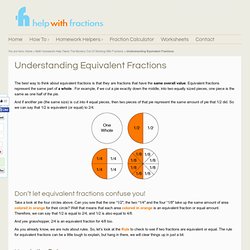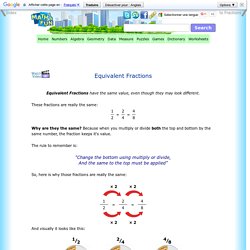Zoom
Trash

Adding and Subtracting Fractions Worksheets. STW Filing Cabinet Logged in members can use the Super Teacher Worksheets filing cabinet to save their favorite worksheets.

Quickly access your most commonly used files AND your custom generated worksheets! Please login to your account or become a member today to utilize this helpful new feature. :) [x] close This document has been saved in your Super Teacher Worksheets filing cabinet. Here you can quickly access all of your favorite worksheets and custom generated files in one place! Click on My Filing Cabinet in the menu at the upper left to access it anytime!
Grade Level Estimation Title: Grade Level Estimation: 1st2nd3rd4th5th Grade level may vary depending on location and school curriculum. Common Core Standards Common core standards listing. All common core standards details. If you think there should be a change in the common core standards listed for this worksheet - please let us know. [x] close Worksheets for practicing addition and subtraction of fractions. Adding-fractions-like-denominators-no-simplifying. Equivalent. Fraction Frenzy. Equivalent_Fractions. Equivalent Fractions. The best way to think about equivalent fractions is that they are fractions that have the same overall value.

Equivalent fractions represent the same part of a whole. For example, if we cut a pie exactly down the middle, into two equally sized pieces, one piece is the same as one half of the pie. And if another pie (the same size) is cut into 4 equal pieces, then two pieces of that pie represent the same amount of pie that 1/2 did. So we can say that 1/2 is equivalent (or equal) to 2/4. Don’t let equivalent fractions confuse you! Take a look at the four circles above. And yes grasshopper, 2/4 is an equivalent fraction for 4/8 too. As you already know, we are nuts about rules.
Here’s the Rule… What this Rule says is that two fractions are equivalent (equal) only if the product of the numerator (a) of the first fraction and the denominator (d) of the other fraction is equal to the product of the denominator (b) of the first fraction and the numerator (c) of the other fraction.
Matching Equivalent Fraction. Equivalent Fractions. Equivalent Fractions. Equivalent Fractions have the same value, even though they may look different.

These fractions are really the same: Why are they the same? Because when you multiply or divide both the top and bottom by the same number, the fraction keeps it's value. The rule to remember is: "Change the bottom using multiply or divide, And the same to the top must be applied" So, here is why those fractions are really the same: And visually it looks like this: Dividing Here are some more equivalent fractions, this time by dividing: Choose the number you divide by carefully, so that the results (both top and bottom) stay whole numbers.
If we keep dividing until we can't go any further, then we have simplified the fraction (made it as simple as possible). You can make equivalent fractions by multiplying or dividing both top and bottom by the same amount.